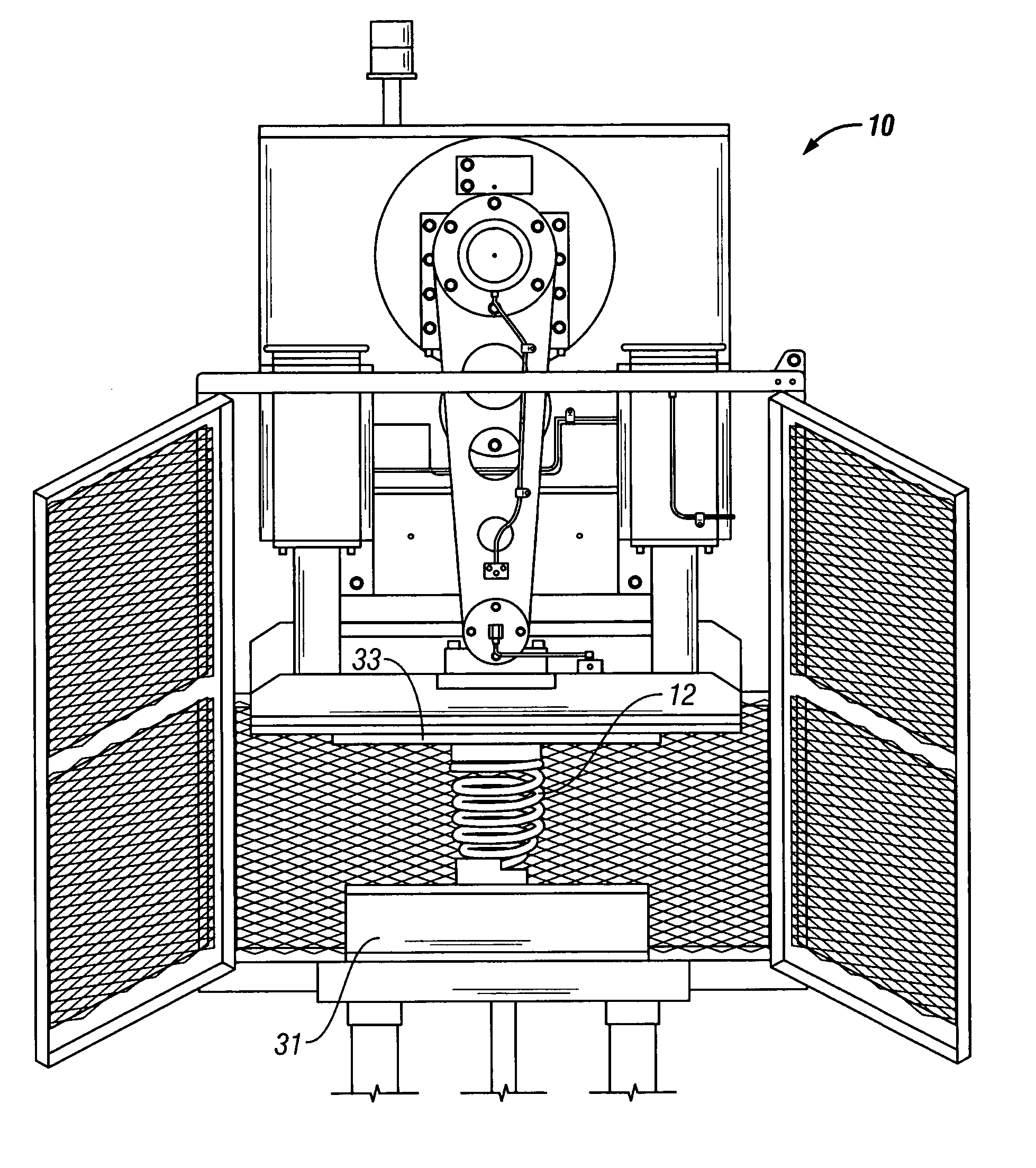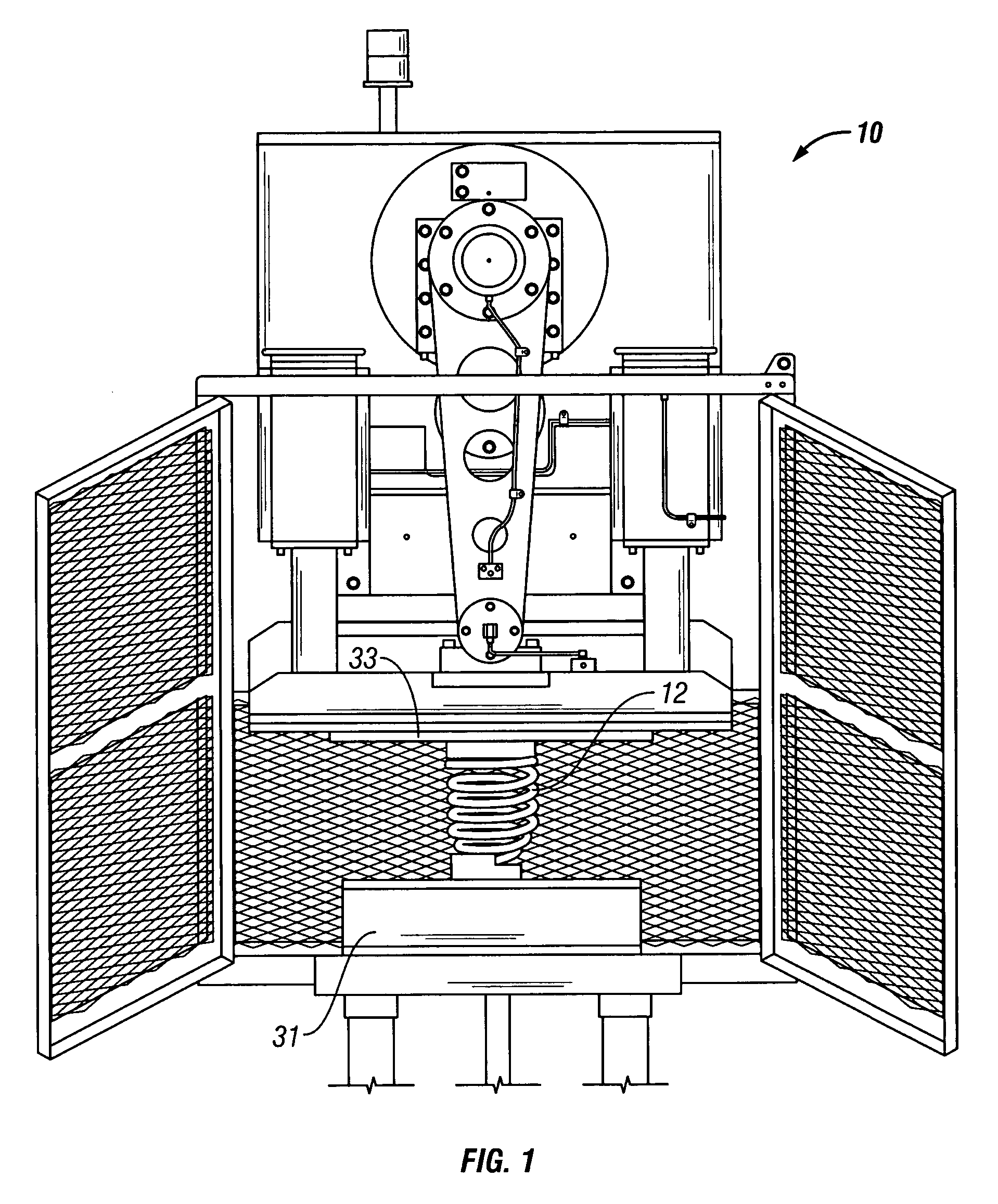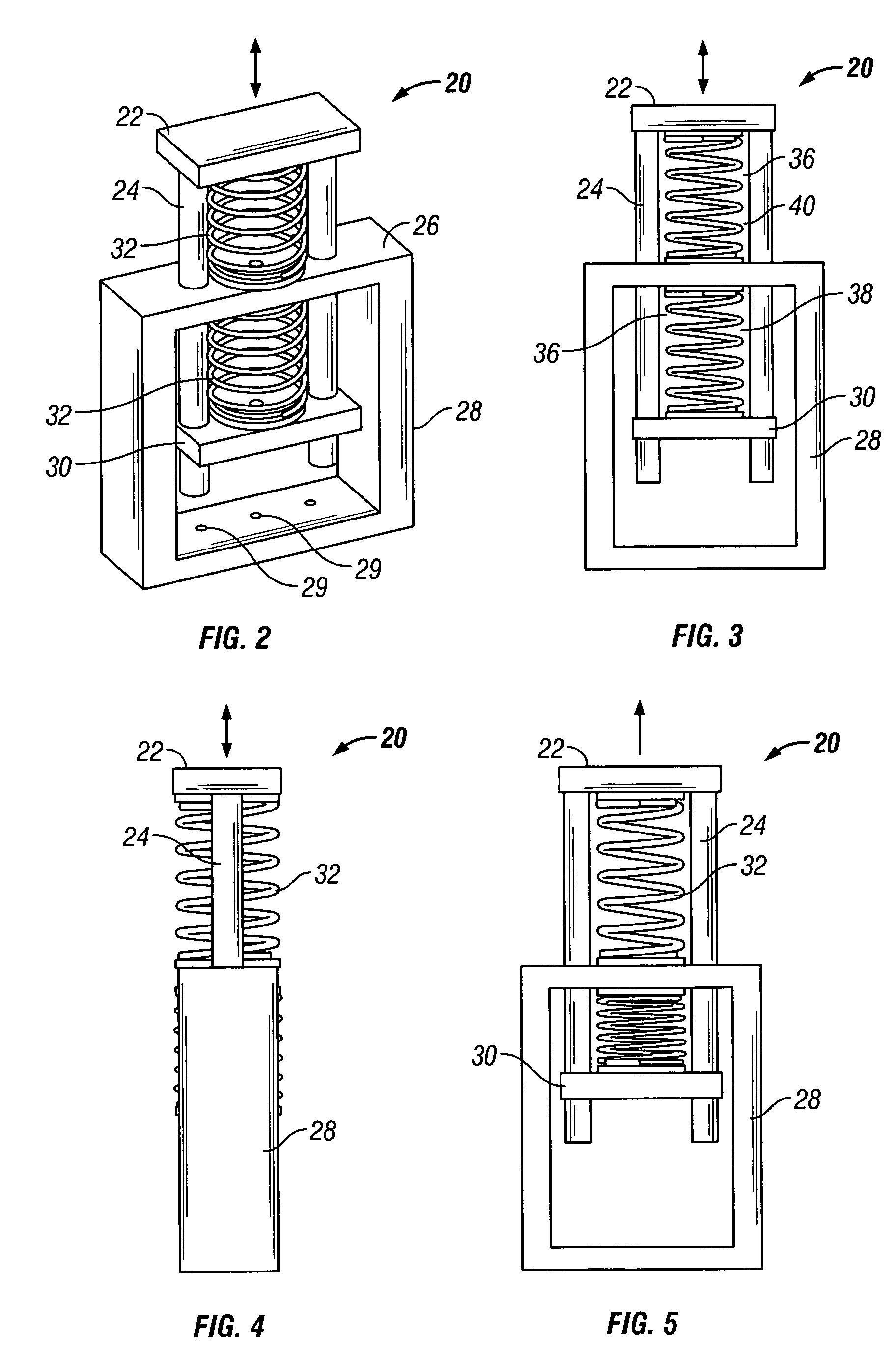Method and apparatus for fatigue testing
- Summary
- Abstract
- Description
- Claims
- Application Information
AI Technical Summary
Benefits of technology
Problems solved by technology
Method used
Image
Examples
first embodiment
[0039] Specifically, as illustrated in FIGS. 2-5, system 20 may include an upper plate 22 fixedly connectable to a driving mechanism, such as mechanism 10 illustrated in FIG. 1, of a conventional fatigue test system, such as at 33. System 20 may include at least two extensions, illustrated as circular shafts 24 in FIG. 2, disposed within suitable openings (not shown) in top wall 26 of frame 28. The openings in top wall 26 may include suitable bearings (not shown) for permitting smooth reciprocation of shafts 24 therein. It should be noted that shafts 24 may be formed of a variety of cross-sections for permitting reciprocation of plates 22, 30 therewith. Frame 28 may include a plurality of fixing points 29 for fixing frame 28 to reaction mass 31 (see FIG. 1). Shafts 24 may be fixedly mounted to lower plate 30 at or adjacent their bottom-most ends thereof. Lower plate 30 may include a retention means such as a pin (not shown), ball-screw locking mechanism (not shown) or suitable faste...
second embodiment
[0042] system 100 will now be described in detail in reference to FIGS. 6-8.
[0043] Specifically, for the second embodiment of system 100, as illustrated in FIGS. 6-8, system 100 may include a vertically fixable plate 42 connectable to a driving mechanism 10 of a conventional fatigue test system, such as the system disclosed in FIG. 1. System 100 may include shafts 44 disposed within suitable openings in plate 42 and movable plate 46. Shafts 44 may be fixedly mounted to lower fixing plate 48. As discussed above for the first embodiment of system 20, for the second embodiment of system 100, it should be noted that shafts 44 may be formed of a variety of cross-sections for permitting reciprocation of plate 46 by means of driving mechanism 10. Plate 42 may include a retention means such as a pin (not shown), ball-screw locking mechanism (not shown) or suitable fastening means disposed on a threaded section thereof for permitting vertical adjustability and retention thereof along the len...
third embodiment
[0046] system 200 will now be described in detail in reference to FIGS. 9-11.
[0047] Specifically, for the third embodiment of system 200, as illustrated in FIGS. 9-11, system 200 may include plates 62 slidably disposed on shafts 68, and a driving mechanism 64, such as a driving mechanism of a MTS actuator, having a piston (not shown) including piston rods 66. Shafts 68 may be disposed within suitable openings in plates 62, in a similar manner as shafts 44 of the second embodiment of system 100. As discussed above for the first and second embodiments of systems 20, 100, for the third embodiment of system 200, it should be noted that shafts 68 may be formed of a variety of cross-sections for permitting sliding movement of plates 62 for insertion of springs 70. Plates 62 may each include a retention means such as a pin (not shown), ball-screw locking mechanism (not shown) or suitable fastening means disposed on a threaded section thereof for permitting sliding movement and lockable ret...
PUM
 Login to View More
Login to View More Abstract
Description
Claims
Application Information
 Login to View More
Login to View More - R&D
- Intellectual Property
- Life Sciences
- Materials
- Tech Scout
- Unparalleled Data Quality
- Higher Quality Content
- 60% Fewer Hallucinations
Browse by: Latest US Patents, China's latest patents, Technical Efficacy Thesaurus, Application Domain, Technology Topic, Popular Technical Reports.
© 2025 PatSnap. All rights reserved.Legal|Privacy policy|Modern Slavery Act Transparency Statement|Sitemap|About US| Contact US: help@patsnap.com



